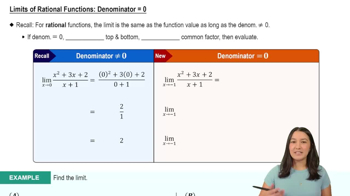27–40. Implicit differentiation Use implicit differentiation to find dy/dx.
sin x+sin y=y
 Verified step by step guidance
Verified step by step guidance Verified video answer for a similar problem:
Verified video answer for a similar problem:



 5:14m
5:14mMaster Finding The Implicit Derivative with a bite sized video explanation from Patrick
Start learning27–40. Implicit differentiation Use implicit differentiation to find dy/dx.
y = xe^y
Vertical tangent lines
b. Does the curve have any horizontal tangent lines? Explain.